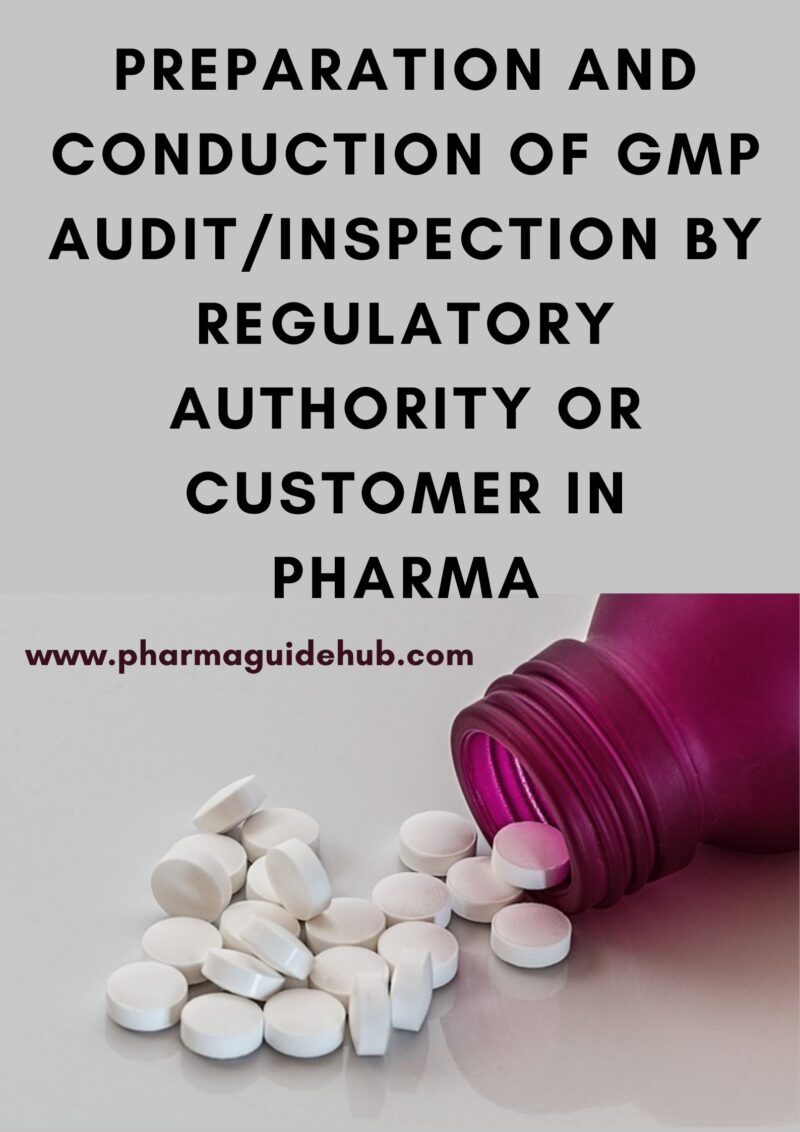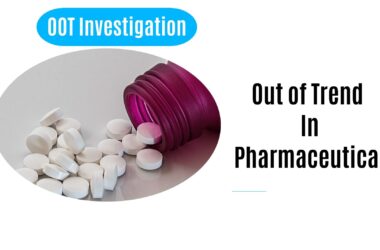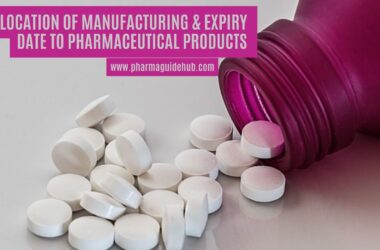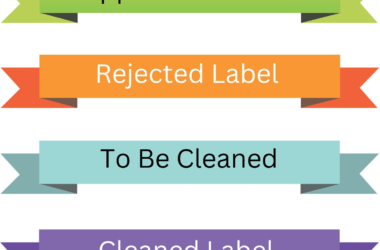- OBJECTIVE:
To lay down a procedure for the preparation and conduct of GMP inspections by the regulatory authority or customer.
- SCOPE:
This SOP is applicable for the preparation and conduct of GMP inspections by a regulatory authority or customer at {Company Name} {Company Location}.
- RESPONSIBILITY:
Officer QA – Preparation of SOP.
Executive QA /designee Review and technical correction of SOP.
- ACCOUNTABILITY:
Manager QA shall be accountable for Approval, training and compliance of this SOP.
- PROCEDURE:
- Intimation / Conformation of the Audit / Inspection:
- Marketing department, regulatory affairs department or other external agency shall give the notification to the plant regarding the probable audit/inspection of the facility along with audit perspective.
- Prior to the audit, appropriate responsible persons from personnel list shall be identified as core responsible group for making the necessary preparation for audit.
- The entire relevant document related to the project under audit perspective shall be made available in a designated place for prompt recall for review by the auditor/s.
- Prior to the audit, escort/s for the auditor/s shall be identified to guide and assist auditor/s during the audit at all times.
- Entry Procedure:
- Entry procedure shall be followed as per respective SOP.
- Intimation shall be given to security personnel about the audit and audit schedule to keep the necessary entry register and the visitor badges ready on all the days of the audit to ensure that minimum time is spent at the sign-in.
- Pre-identified escort/s meets the auditor/s at the security gate and escort them to the room designated for the use by auditor/s.
- Auditors produce the necessary identification in form of an identity card or introduction letter from the respective agency authorizing them to audit the facility, to the plant Manager or the senior most company official present at the time of audit.
- Prior to the commencement of the audit, the Manager QA introduce to the auditor/s with the plant management team comprising of department Managers and any other relevant personnel.
- Presentation & Answering of Question:
- An appropriately prepared brief presentation about Plant, products under perspective and key plant policies/procedures shall be presented to the auditors/s by relevant company personnel. One hard copy of the presentation shall be submitted to the auditors/s for their record (if required).
- Auditors shall request to provide a brief summary at the end of each day regarding any audit observation made during that day.
- Any document requested by the auditor/s during the audit has to be promptly made available to the auditor/s. If an explanation shall be requested by the auditor on the document, the people knowledgeable about that document provide the same.
- A scribe has to be assigned along with each auditor who notes down all the questions and answers, any document request made by the auditor and follow up on the same.
- The relevant person in clear and unambiguous language answers any question of the auditor. There shall be no misrepresentation of facts, or any misleading answers given to the auditors/s.
- If the question is not clear, then request shall be done to repeat the same, reframe the question in a different manner or plant member can defined in local language.
- Provision of Documents & Record:
- Upon the request by the auditors, photocopies of the requested documents shall be provided to the auditor.
- All the photocopies of the controlled documents are considered as uncontrolled copies and need not be stamped as such.
- Certain Key Policies:
- Photography shall not be permitted inside the plant at any time. Photography can be permitted after the permission of Manager HR, if there is an appropriate or regulatory reason for the same.
- Jewelry (rings, chains, bangles, anklets, earrings) wrist watches, cell phones are not permitted inside the manufacturing area at all times. They remove and kept in the HR department, cell phone can be allowed only silence mode.
- The management representative and QA host respond to the audit.
- Answer to any question by inspector/auditor shall be given in clear language without any doubt. If the person is unaware of the correct answer, he provides the right answer to inspector/auditor after consultation with the right person.
- During the daily wrap-up session all the open points has to be clearly discussed with the inspectors/auditors and addition information shall be provided if found necessary.
- At the end of day after closing meeting, the escort accompanies Inspector to designated place (Hotel / Restaurant).
- After departure of inspector, the core team members meet and discuss the outcome of inspection and plan corrective action for any deficiencies ( if any).
- Exit Procedure:
- Exit procedure should be followed as per respective SOP. At the end of the day, visit’s badge shall be returned to the security at the gate. The check in and checkout procedure shall be followed for every single day of the audit.
- Response to any Non-Compliance:
- In case any point of non-compliance made by the inspectors, the same should be addressed immediately or within the time frame given by the respective statutory authority.
- On receipt of non-compliance by any regulatory authority or auditor, compliance report should be submitted with a timeline.
- The response should state the action to be taken to address each finding and the timelines for completion of all action.
- The inspection report can be received by any department, for example the regulatory affairs department, export department or other should be reported to the unit Manager.
- Unit Manager forward the inspection report to the quality assurance Manager.
- Upon receipt of the inspection report, the unit quality assurance department in coordination with the respective department shall prepare a draft compliance report.
- All CAPA for any non-compliance taken should be finalized & completed as soon as possible.
- CAPA should be enclosed as document evidence for quality assurance review.
- The final draft compliance report should be reviewed by the concern department audited and finally should be verified by the unit quality assurance Manager.
- If found satisfactory, it should be signed by unit Quality assurance Manager & unit Manager.
- A final signed copy report should be forwarded to the concern authority by the QA Manager by e-mail or courier.
- One photocopy or a copy of the compliance report should be in the unit quality assurance department for future references.
- All corrective action should be closely tracked and monitored to ensure satisfactory completion as per commitments given in the compliance report.
- REFERENCES:
Not Applicable
- ANNEXURES:
Not Applicable
ENCLOSURES: SOP Training Record.
- DISTRIBUTION:
| Controlled Copy No. 01 | : | Manager Quality Assurance |
| Controlled Copy No. 02 | : | Manager, Quality Control |
| Controlled Copy No. 03 | : | Manager Production |
| Master Copy | : | Quality Assurance Department |
- ABBREVIATIONS:
| QA | : | Quality assurance |
| QC | : | Quality control |
| SOP | : | Standard operating procedure |
| Mfg. | : | Manufacturing |
| Exp. | : | Expiry |
- REVISION HISTORY:
CHANGE HISTORY LOG
| Revision No. | Details of Changes | Reasons for Change | Effective Date |
| 00 | New SOP | Not Applicable | To be written manual |
Frequently Asked Questions?
1. What triggers a GMP audit?
- Regulatory body schedules, product complaints, change in operations, prior audit findings, customer requests.
2. What are the key areas of focus during the audit?
- Quality Management System, manufacturing processes, documentation, batch records, personnel training, environmental controls, equipment qualification, product testing, deviations and corrective actions.
3. How can we prepare for an audit?
- Mock audits, review past audit findings, ensure documentation is complete and accurate, train personnel, maintain clean and organized facilities.
4. What documents should be readily available for the auditors?
- Standard Operating Procedures (SOPs), batch records, validation reports, cleaning records, training records, deviation reports, corrective action plans (CAPAs).
5. How should we handle auditor questions and requests?
- Be honest and transparent, provide all necessary documentation promptly, answer questions clearly and concisely, avoid defensiveness.
6. What are common non-conformities identified during audits?
- Inadequate documentation, deviations not properly investigated and closed out, lack of training, environmental control issues, inadequate cleaning validation, equipment qualification failures.
7. How should we handle non-conformities identified by the auditors?
- Acknowledge the findings, provide immediate corrective actions, develop a comprehensive CAPA plan with root cause analysis and preventative measures.
8. What happens after the audit?
- Auditors will issue a report with findings and recommendations, implement corrective actions and monitor their effectiveness, prepare for a close-out meeting with the auditors.
9. What are the benefits of regular GMP audits?
- Improved quality and compliance, reduced risk of product defects and recalls, enhanced customer confidence, continuous improvement of QMS.
10. What are the differences between regulatory and customer audits?
- Regulatory audits focus on compliance with specific regulations, while customer audits may have additional requirements based on their own quality standards and expectations.
Bonus Tip: Proactive communication with the auditors throughout the process can help build trust and facilitate a smoother audit experience.
Remember: Thorough preparation, open communication, and prompt corrective actions are key to a successful GMP audit.




